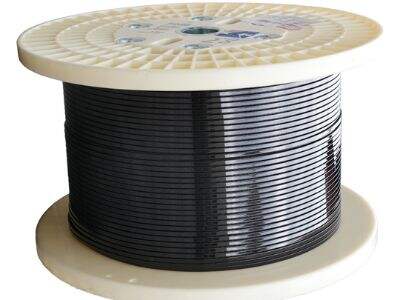If you are performing some electric project then you will need something known as winding wire. Winding wire is a type of thin wire and flexible. You take this to wrap around a center part called a core to make electromagnetic coils. These coils are quite crucial since they are employed in several electrical appliances like transformers, motors, and generators. When managing your project, the first thing to do so that everything works properly and is safe is to choose the right winding wire. We have compiled this guide to help you determine the best winding wire for your use case.
What For to Consider When Selecting Winding Wire
There are several things to consider when you settle on winding wire for your project. One of the most important factors is the application of the wire. Depending on the manufacturing process, the copper winding wire can be made of copper, aluminum, or silver. Of these, copper wire is usually the most preferred option. Copper wire is a great conductor and due to that, it is durable, pays off well in the long run, and does not break down easily. The other relevant aspect is wire size and thickness. A thick wire cable can carry more electricity, while a thinner wire will have a higher resistance. So, select a not wire only the right size, it should also be the right thickness, so your project can handle the electrical load.
Types of Winding Wire
Electric winding wire is offered in a variety of types based on different properties and applications. Some examples are: magnet wire, super enamelled wire, enameled wire. More generally, e-nameled wire is also coated with a thin layer of enamel which protects the wire and allows it to be used in applications where such wire is typically needed. important for projects that might get hot during use. Magnet wire, however, is coated with a thin layer of varnish. This kind of wire can be a very handy tool when working in tight places. Lastly, super enamelled wire has a unique enamel coating that enables rapid winding and provides outstanding electrical properties, particularly beneficial in high-performance applications.
How to Choose The Right Size and Thickness of Winding Wire
When you are looking for A quality winding wire to your are looking you have to ask yourself about the current and voltage requirements for your device. The current path is determined by the size of the wire that will prevent overheating. too Wire small may overheat, which can lead to issues. Another factor is the thickness of the wire, critical as it influences the amount of resistance that the wire has. So you need to select a wire that can carry the current and voltage your project requires, without overheating or breaking. Measure twice and cut onceTaking the time to find the correct size and thickness makes sure your project operates in a safe and effective manner.
Winding Wire Insulation Material Selection
As well as considering the wire itself, it is equally as important to look at the material used on the insulation on the wire. Insulation is a protective covering that helps protect the wire from physical damage, but it also acts as an electrically insulating layer to prevent leakage of electricity. Various common insulation materials used on winding wire copper are: polyurethane, polyester, polyimide. Known to be flexible and heat resistant, polyurethane insulation is ideal in applications that require higher temperatures. Polyester is durable and inexpensive compared to other types of insulation, making it a good pick for general-purpose purposes. Finally, polyimide insulation is extremely heat resistant, able to withstand extreme temperatures, which makes it ideal for aerospace and military applications.
Can I Know the Winding Wire Temperature Rating and Voltage Requirements?
If you are buying winding wire for your application, it is important to keep in mind the temperature rating and voltage specifications of the wire. The insulation rating gives you the highest temperature that the wire can withstand without beginning to break down or degrade. For example, the voltage specifications show the maximum voltage that the wire can transmit without breaking down. This standard of wire is important to your project to ensure it meets the specific temperature and voltage standard required. So this ensures that the wire just works properly and safely without any issue.


